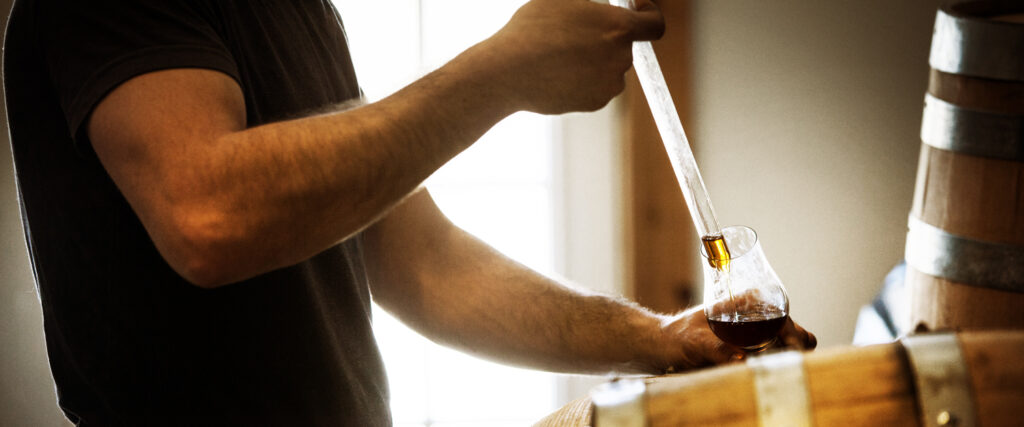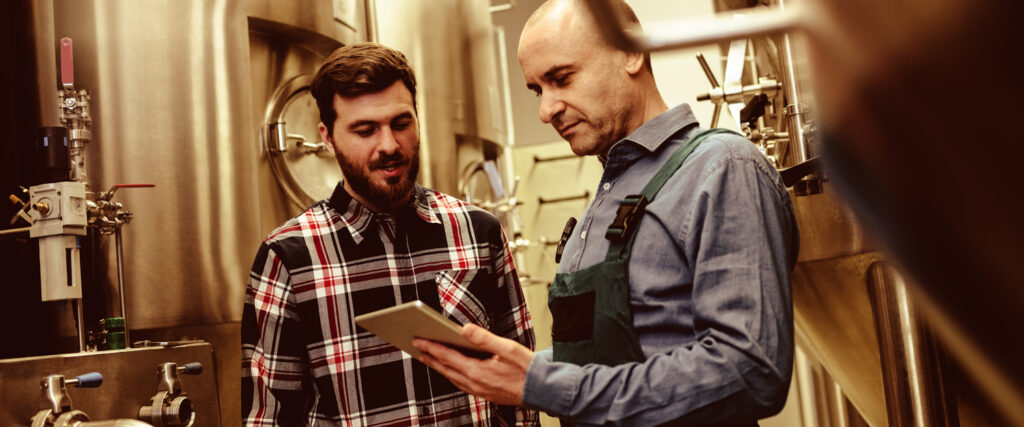Analyzing distillation efficiency will maximize production and increase spirit yield. This blog will discuss various methods of enhancing efficiency using process aids. We want to help you maximise yield and optimise your distillation process; we have full technical support available for our distilling customers.
What is Distilling?
Distilling is a process of concentrating alcohol (primarily ethanol) to make a strong spirit that can be aged, flavoured, and bottled for enjoyment on suitable occasions. The base for the alcohol can be from any fermentable source. Typically, barley malt is used for Irish and Scotch whisky production.
Other fermentable sources used:
- Cane Sugar (Gins)
- Molasses (Rums)
- Rye (Bourbon)
- Corn Syrup (Gins)
- Potatoes (Vodkas)
- Stone Fruits (Rakia, Iriki)
- Agave Syrup (Tequila)
- Rice (Sakes Spirits).
Distillation Efficiency in Production
The production of the “wash” (in brewing = wort) is similar at the start of brewing. The distiller will specify a high diastatic power (DP) malt. Geterbrewed supplies premium-quality distilling malts from Muntons and Simpsons. We also have a huge range of specialty malts from French and Jupps for distillers wanting to create novel flavours in their new-make spirit.
This indicates the ability of the natural enzymes present in the malt to hydrolyse the remaining starch in the kernel after malting to fermentable sugars in the mash. A fixed grain weight will yield a fixed amount of spirit. If the spirit yield increases from the same grain weight, the distiller can get more volume for the unit price paid for the malt. In turn, production efficiency increases, and production costs decrease. Various processing techniques can be employed to achieve this, although some are prohibited by law, e.g., enzymes in Scotch Whisky distilling in Scotland.

Recommendations
Firstly
The first technique is using calcium ions in the mash. The role of calcium in mashing is well understood in its ability to enhance the natural enzyme activity in saccharification. A level of 150ppm or higher (15g/hl) in the mashing and sparging liquor ought to be achieved. A water test should be done by an accredited laboratory. We use Murphy & Sons for this at Geterbrewed. Then, the calcium concentration should be enhanced by adding salts like calcium sulphate or chloride to reach this level.
Secondly
The second technique is the use of saccharifying enzymes. The most useful enzyme in distilling is probably amyloglucosidase (AMG). Amylase, glucanase and a range of others play a key role in breaking down the remaining starch after malting to maltose and maltotriose. These enzymes work slowly and methodically, controlled by the specific linkages in the molecular chains of starch. AMG works faster, and it is not limited by such molecular bonding. It breaks everything down to glucose and fructose, preferentially metabolised by yeast. This way, extra starch can be turned into fermentable sugar and alcohol, enhancing spirit yield.
Thirdly
The third recommendation is closely tied to the first two: the need to understand the fundamental principle of enzyme action, both the naturally occurring ones in the mat and any additional ones employed as process aids. This is because enzyme activity is governed by pH and temperature. Applying the correct regime in the mash ensures optimal enzyme activity. This can be achieved by analysing the mashing liquor, determining the alkalinity (as CaCO3), and then treating the water to achieve a pH of 5.2 +/- 0.1 in the mash. This, combined with a mashing temperature of 63-66°C, will ensure the maximum efficiency of saccharification.
Fourthly
The final recommendation is the correct yeast selection for the desired spirit outcome following fermentation. One that will ferment all available sugars to alcohol is ideal, and there is now an increasing range on the market. Typically, the yeast should be able to ferment to between 16 – 18% abv on a regular and consistent basis without the need for yeast nutrition. Occasionally, these are required and can be easily added to the wort at the start of fermentation.

Starting Distillation Efficiency
- Send a sample of your incoming raw liquor to Murphy & Son Laboratory, Alpine Street, Old Basford, Nottingham, NG6 0HQ. For a small cost, they will send you their analysis and a recommendation for treatment to get the correct pH and calcium level in your mashing and sparging liquor.
- Spirit yield can be further enhanced with the use of enzymes. The following are all proven for use in the distilling operation:
- Amylex 5T Alpha Amylase Enzyme – 28kg
- Glucanase 5L (also available in 25L)
- AMG-Amyloglucosidase 300 5L (also available in 1L)
- Yeast selection. A wide range of distilling yeasts can be found on our website at Fermentis Distilling Yeast
- Yeast nutrition. This may be required to boost yeast performance in difficult washes, such as molasses for rum or corn syrup for gins. A good selection of yeast nutrient additions can be found here: Yeast Nutrients.
To wrap it up
Like all production activities, distillery production has continual challenges. These include meeting sales demand, achieving timely outcomes of the correct quality, and keeping costs as low as possible.
Thanks to Nick Brading from Murphy & Son Ltd. for writing this blog. Applying the above learning through Murphy & Son’s know-how and products will benefit the distiller in all departments.
Check out our Tips and Tricks for Distilling on our YouTube channel.